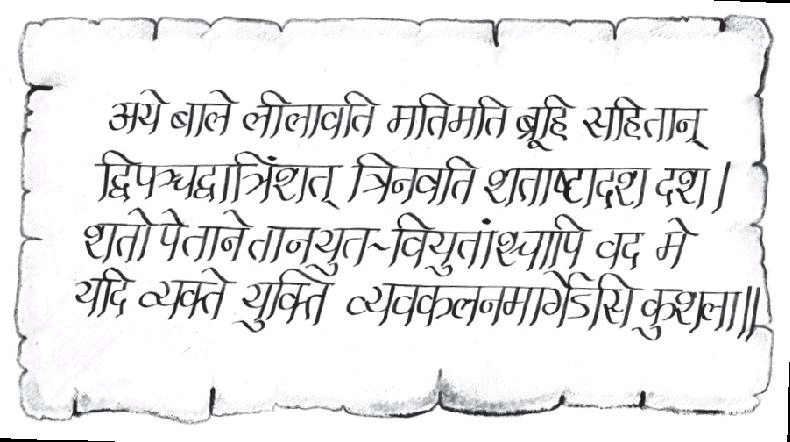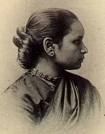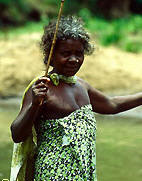| Women and Science
En Hedu’anna, the astronomer priestess of the Moon Goddess (circa 2354 BCE), the first female name recorded in technical history, was the daughter of Sargon (of Akkad) who established the Sargonian Dynasty in Babylon some 4000 or so years ago. Sargon appointed his daughter the chief astronomer priestess of the moon goddess of the city. Her name means ‘ornament of heaven’; her birth name is unknown.
A bas-relief of En Hedu’anna is at the University Museum in Philadelphia. A s early as 3000 BCE, the priests and priestesses of Sumeria and Babylon established a network of observatories to monitor the movements of the stars and En Hedu’anna is the first in a long line of women. The calendar they created is still used to date certain religious events like Easter and Passover. s early as 3000 BCE, the priests and priestesses of Sumeria and Babylon established a network of observatories to monitor the movements of the stars and En Hedu’anna is the first in a long line of women. The calendar they created is still used to date certain religious events like Easter and Passover.
Lilavati
Lilavati was the daughter of the twelfth-century mathematician Bhaskaracharya, for whom he wrote the eponymous treatise (from which the fragment of verse quoted is taken).

Oh Lilavati, intelligent girl, if you understand addition and subtraction, tell me the sum of the amounts...
Although legend has it that Lilavati was never married, as the first woman student of mathematics in India, she has innumerable descendants in the Indian women of science.
Shi Dun (inventor c. 105) was the empress of China who, along with a member of her staff Tsai Lun, developed the first paper from the bark of mulberry trees.
How long have Women been Active Scientists?
Actually, how long have people been active in science? The answer is the same for both women and men - as long as we have been human. Science, technology and Mathematics have all been part of our human progress, through every step of our path to the present. Women and men together have researched and solved each emerging need.
The first literature appeared some 4,000 years ago. Stone and bone records stretch back further than those first alphabets, but give us no names. The very first technical name was male - Imhotep - the architect of the first pyramid. The second technical name was female - En Hedu’anna–the astronomer.
| | ‘If more women stay in science, they will reshape how science happens. I don’t think that the way science has happened for the last 100 or so years is necessarily the most successful model. I’d like to see an infusion of new ways of doing things.’ Elizabeth Blackburn
2009 Nobel Prize winner in Physiology or Medicine | |
Marie Curie, who won the Nobel Prize twice said: ‘Life is not easy for any of us. But what of that? We must have perseverance and, above all, confidence in ourselves. We must believe that we are gifted for something, and that this thing, at whatever cost, must be attained. One never notices what has been done; one can only see what remains to be done and nothing in life is to be feared. It is only to be understood.’
Women and Science in India
Over the years, Indian women have overcome traditional mindsets and excelled in professions like teaching, medicine and pure sciences. Women have made important contributions in all walks of life and made inroads into new fields like engineering and information technology. But, even before they reach the point of choosing a career in science, women have to make difficult choices.
The Issue
A study by Dr Neelam Kumar examines the issues and importance of gender vis-à-vis other characteristics in determining scientists’ research-related values, research performance, academic rank and professional recognition in the Indian context. An analysis of the data on around 500 physical scientists reveals:
• The number of women scientists is marginal (women constitute only 18%)
• There are differences in the social class background of men and women scientists. This implies that only girls from elite and urban areas were able to choose science as a career
• Female and male scientists do not differ in terms of research-related attitudes
• The higher proportions of women at lower ranks are not a simple function of low research productivity. The female scientists do not differ significantly
To address the issues pertaining to encouraging women to take up science and provide gender enabling measures to working women scientists, a Task Force for Women in Science was set up by the government in 2005. Under the aegis of the task force, a National Conference of Women Scientists was held during in 2008 with the aim of bringing about greater visibility to the achievements of women scientists working in cutting edge areas of science.
In July 2009, Science and Technology Minister Prithviraj Chauhan told a meeting of 27 senior women scientists in New Delhi that he was ‘not happy about the number of women scientists in the country. There are many problems. Out of 37 institutes of CSIR, not a single lab is headed by a woman. Attempt will be made to make gender audit in scientific establishment obligatory.’
The Reasons
Though there is no explicit discrimination against women in enrollment and recruitment at the colleges and universities, attitudinal biases and absence of social structures and institutional support systems have been the retarding factors against women in achieving their potential in the pursuit of careers in science. The under representation of women in science, particularly at the higher levels, is a case of serious concern for women scientists and science policy planners. For more and more women to be successful in science, support structures and positive attitude towards careers in science for women need to be created. Practice of science cannot be built on inequality.
Some of India’s Forerunner Women Scientists

Anandibai Joshi (1865-1887) was the first Hindu woman to obtain a medical degree in the Western hemisphere. Though she died at an early age of 22, she is an inspiration to Indian girls from all walks of life. The Maharashtra government has a fellowship in her name for young women working on women’s health.
E K Janaki Ammal (1897-1984), Founder Fellow of the Indian Academy of Sciences, winner of Padmashri Award, was a renowned botanist and plant cytologist who made significant contributions to genetics, evolution, phytogeography and ethnobotany.
| | ‘Being a woman scientist has not always been easy because one has had to make difficult choices in life. To be accepted as a scientist who happens to be a woman is still an uphill task in some areas considered a man’s world! Even where women are allowed to study and work, society still stereotypes women in certain roles and does not expect us to break from them easily. This often acts as a deterrent for young women who may have wished to take up careers in science. If we could free ourselves from such prejudices and approach science with an intellectual objectivity, it may be possible to do outstanding scientific research.’ Aruna Dhathathreyan,
a biophysical chemist | | Some Initiatives
There are great concerns now being shown in India about careers for women in science in the sense how to nurture their talent by facilitating and providing various options. To encourage women scientists as well as inspire girls and women to take up careers in science, several schemes are being put in place.
A group of twelve Indian women scientists together formed an association called Indian Women Scientists’ Association (IWSA) more than 26 years ago in 1973 near Mumbai, with objectives of promoting and nurturing the talents of women scientists. Now, IWSA has over 1400 women scientists from different parts of the country, with eleven active branches in cities like Delhi, Pune, Bhopal, Roorkee, Hyderabad, Lucknow, Kalpakkam, etc. Regular meetings, conferences and seminars highlighting issues that affect woman scientists as well as scientific issues that affect women are organised in IWSA.
The Women Scientists Scheme (WCS) has been evolved in this context by the Department of Science and Technology (DST) for providing opportunities to women scientists and technologists between the age group of 30-50 years who desire to return to mainstream science and work as bench-level scientists. Through this endeavour of the Department, a concerted effort will be made to give women a strong foothold into the scientific profession, help them re-enter into the mainstream and provide a launch pad for further forays into the field of science and technology, both from the point of view of pure science and its application to societal development.
| | Revival of Traditional Healing by Irula Women
Born in nature’s lap, Irulas share a symbiotic relationship with Mother Earth. They reside in the hills of northern Tamil Nadu and are one among the six oldest Adivasi tribes. Irula Vaidyars, mostly women, practice traditional healing systems, which use over 320 medicinal herbs. They treat several new-age diseases with a high success rate.
The Irula Tribal Women’s Welfare Society (ITWWS), established in 1986, empowers Irula women by promoting their medicinal products. | |
From a report on the position of women in science, engineering and technology (SET) some of the factors that need to be addressed are:
• Open and fair recruitment policies using sources likely to attract women and including women on recruitment panels
• Training for all staff especially top management in diversity and equality issues
• Opportunity for flexible working, i.e., part-time, job share, working from home, flexible hours, etc.
• Use of work-life balance policies
• Equal pay policies and job evaluation
• Open and fair appraisal and career development plans
• Open and fair promotion procedures with women represented on promotion boards
• Participation by women equally with men in training, continuing professional development (CPD), transferable management and top leadership/high-flyer skills
Re-gendering and mainstreaming is a task not only for the government but through them for those with responsibility in key organisations such as schools, hospitals, universities, research organisations, industries and other employers in the public and private sectors. Improving women’s position and participation in science, engineering and technology is for the benefit of science, the economy and society as a whole.
q Usha Srinivasan
usrinivasan@devalt.org
Back to Contents | |
 s early as 3000 BCE, the priests and priestesses of Sumeria and Babylon established a network of observatories to monitor the movements of the stars and En Hedu’anna is the first in a long line of women. The calendar they created is still used to date certain religious events like Easter and Passover.
s early as 3000 BCE, the priests and priestesses of Sumeria and Babylon established a network of observatories to monitor the movements of the stars and En Hedu’anna is the first in a long line of women. The calendar they created is still used to date certain religious events like Easter and Passover. 

